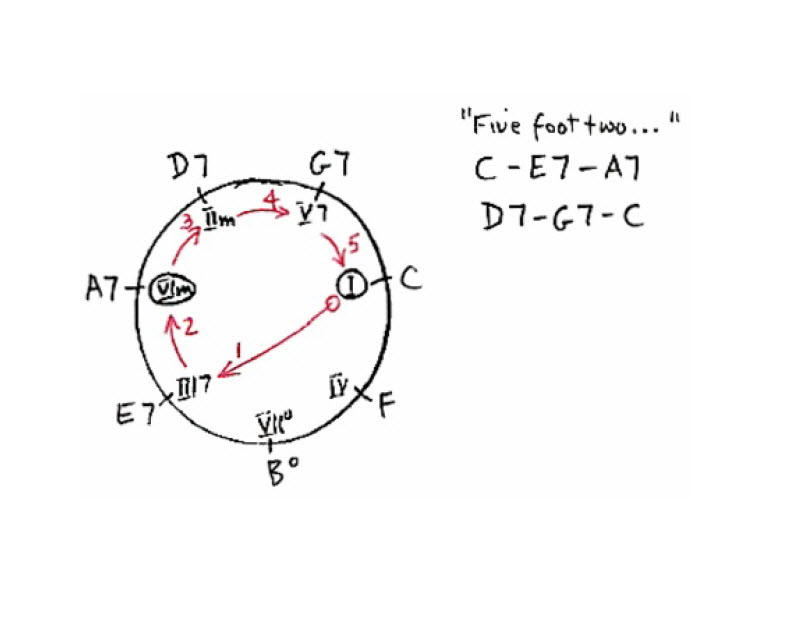You Are Reading the First 6 FREE Chapters (470 pages)
6.10.9 “Five Foot Two, Eyes of Blue”: How the Chord Progression Works
"Five Foot Two, Eyes of Blue" features a chain of secondary dominant chords that deliver substantial forward momentum. They’re seventh chords, and therefore "restless," seeking resolution. They move in strong fifth-down progressions. This song is a classic example of consecutive secondary dominants (Figure 82):

FIGURE 82: Chord Map of “Five Foot Two, Eyes Of Blue” (Words by Sam Lewis and Joe Young, Music by Ray Henderson, 1925)
This chord progression happens to skip the chords F and Bº. What would happen if it didn’t? What happens when the progression goes from the I chord, C major, to the IV chord, F major, in the form of a secondary dominant, F7?
An interesting situation arises.
If you want to continue with a string of secondary dominants, then the chord F7 would normally be the secondary dominant of B♭, not B. Therefore the progression would be on its way out of the key.

